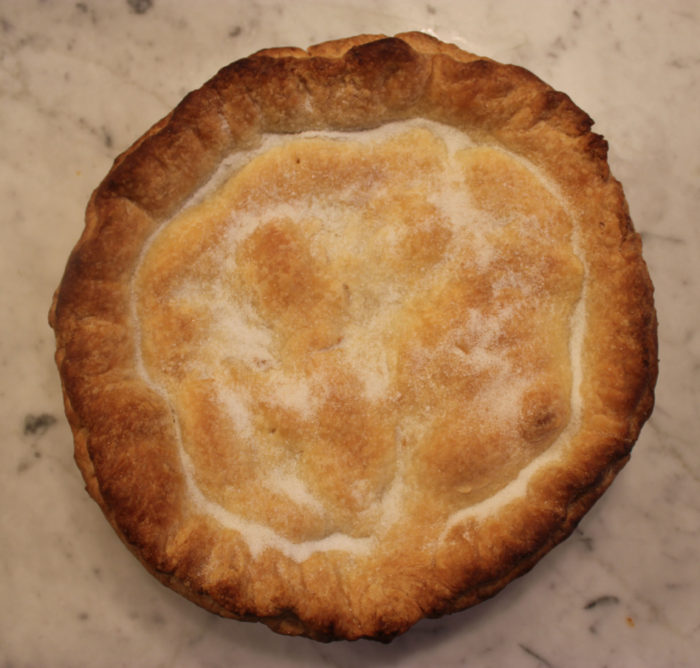
I grew up in Oregon where pies and jams were everyday events. Suzi just returned from Seattle with jars of berry jams: loganberries, marionberries, … Wonders you cannot find back here in the East. I never put jam on my pie as a kid. No need for the pies were sweet enough.
Tomorrow, I’m posting a perfect peach pie. Today, it’s the crust. You cannot have a great pie without a magnificent crust and here is the Basic Flakey Pie Pastry we always turn to. It’s from Pie by Ken Haedrich. We have two houses and two copies of Pie. It’s that kind of book.
Pie does happen to be out of print, though you can still find copies online. Happily, Ken has announced that he has a publisher and a revised edition in play. Should you wait for the new version? No, get Pie now and get the new one later one. Then you can spend time obsessing over what changes and tweaks and additions Ken has made.
Pie is the go-to pie book for us. Make this crust and it will be for you too.
Ken notes that this crust is made with equal amounts of vegetable shortening and butter. The shortening is for flakiness, the butter for flavor. In Pie, Ken has instructions for making his crusts in a food processor, by hand, and with an electric mixer. We always use a food processor and that set of instructions are presented here. It’s just faster, easier and deliciously flawless.
Basic Flaky Pie Pastry
Yield: one double crust
Ingredients:
- 3 cups all-purpose flour
- 1 tablespoon sugar
- 1 teaspoon salt
- ½ cup (1 stick) cold unsalted butter, cut into ¼-inch pieces
- ½ cup cold vegetable shortening, cut into pieces
- ½ cup cold water
Preparation:
Put the flour, sugar, and salt in the food] processor. Pulse several times to mix. Scatter the butter over the dry ingredients and pulse the machine 5 or 6 times to cut it in. Fluff the mixture with a fork, lifting it up from the bottom of the bowl.
Scatter the shortening over the flour and pulse 5 or 6 times. Fluff the mixture again. Drizzle half of the water over the flour mixture and pulse 5 or 6 times. Fluff the mixture and sprinkle on the remaining water. Pulse 5 or 6 times more, until the dough starts to form clumps. Overall, it will look like coarse crumbs.
Dump the contents of the processor bowl into a large bowl. Test the pastry by squeezing some of it between your fingers. If it seems a little dry and not quite packable, drizzle a teaspoon or so of cold water over the pastry and work it in with your fingertips.
Using your hands, pack the pastry into 2 balls as you would pack a snowball. Since you’re making a double crust, make one ball slightly larger than the other; this will be your bottom crust. Knead each ball once or twice, then flatten the balls into ¾-inch-thick disks on a floured work surface. Wrap the disks in plastic and refrigerate for at least an hour or overnight before rolling.
Source: Pie by Ken Haedrich [Harvard Common Press, 2004]
Photo Information: Canon T2i, EFS 60mm Macro Lens, F/3.5 for 1/30th second at ISO‑200
